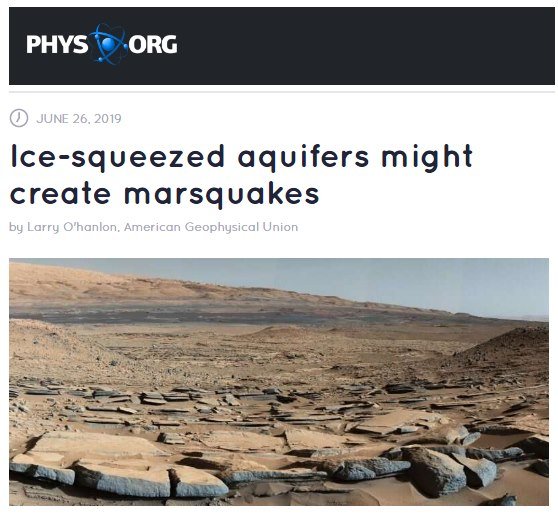
As the Mars InSight lander begins to listen to the interior of Mars, some scientists are already speculating that some earthquakes may be signs of the presence of groundwater beneath the Red Planet’s icy surface.
The idea, proposed by Michael Manga, a planetary scientist at the University of California at Berkeley, and his colleagues, is that Mars could experience earthquakes very similar to those that are produced in Oklahoma and Texas due to injections of water underground with the technique of fracking.
On Earth, the water used in the fracking technique is injected deep into the ground where it increases the pressure between the interstices, tiny spaces between the grains that make up the soil. This pressure can loosen the spaces between the grains and cause them to slip, sending vibrations to the soil itself, thus causing an earthquake.
On Mars, it could also affect pore pressure, according to Manga, who is the lead author of a paper describing their hypothesis in the journal AGU Geophysical Research Letters. But instead of fracking, Manga proposes that winter temperatures on Mars’ surface could seep downward into liquid groundwater, freezing the upper layers of aquifers and compressing the still-liquid water below. This pressurized groundwater could loosen faults on Mars and cause just the kinds of surface earthquakes that have already been detected by the Insight lander, again according to Manga.
However, this is not enough, because earthquakes need triggers. By modeling their hypothetical frozen aquifers, Manga and his colleagues found that the two factors that would trigger earthquakes are gravitational influences from Phobos and the Sun, as well as changes in barometric pressure. The last is caused by the Sun’s heating and cooling of its tenuous atmosphere.
If Manga and his colleagues are correct, Insight should begin to detect a pattern in the earthquakes that corresponds to changes in tidal forces and barometric pressure. If that happens, it could be seen as evidence of deep, pressurized groundwater. If that water really existed, future Mars explorers might be able to drill and let the water gush out of the ground under its own pressure, like an artesian spring.
The hypothesis could also explain some features, such as the icy ridges and cryo-volcanoes seen on the solar system’s icy moons.
Also according to Manga, what if the patterns of Martian earthquakes don’t fit the pressurized groundwater model? “Either way, the answer would be fascinating.”
Translation by Marco De Marco
Source: https://phys.org/news/2019-06-ice-squeezed-aquifers-marsquakes.html
AGU Source: https://blogs.agu.org/geospace/2019/06/25/ice-squeezed-aquifers-might-create-marsquakes/
Full research downloadable free PDF:
“Squeezing Marsquakes out of groundwater”. https://www.essoar.org/doi/pdf/10.1002/essoar.10500972.1
This post has been automatically translated. See the original post here.